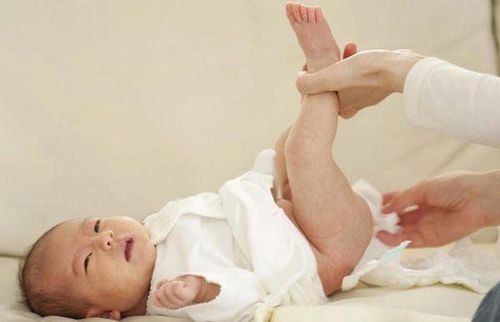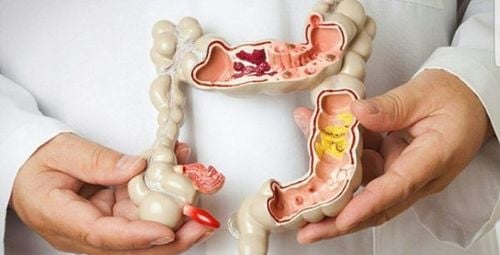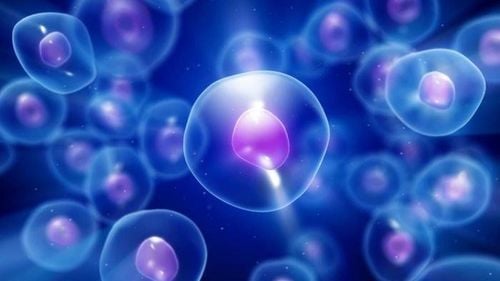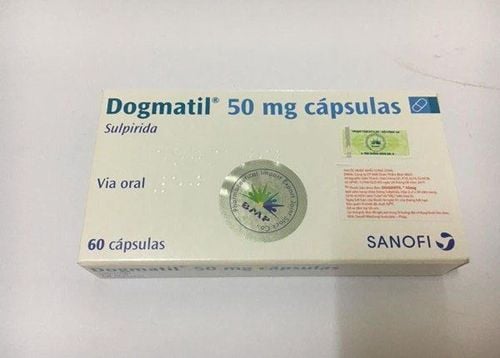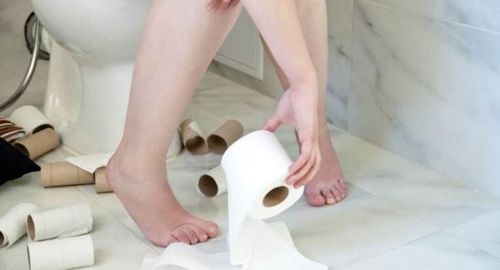This article consulted by Mai Vien Phuong, M.A, M.D – Gastroenterologist, Endoscopist – Department of Outpatient and Internal Medicine – Vinmec Central Park International General Hospital
The condition of having green stools can be caused by a variety of factors, sometimes simply due to dietary habits. However, it can also be a sign of a serious gastrointestinal condition. So, what are the common causes of green stools?
Many patients seek consultation due to green-colored stools. "Why is my stool green?" However, take a look at your diet—there’s a good chance you'll find the answer there. But there are also several other causes that can lead to unusual stool color:
- An underlying medical condition
- Antibiotic use
- A recent medical procedure
- Bacterial infections
1. Why is Stool Typically Brown or Yellow?
The typical brown or yellow color of stool is due to a mixture of leftover dead red blood cells and waste products from bacteria in the intestines. Bile in the intestines is usually greenish-yellow, but bacteria contribute to the remaining color. In addition to giving your stool its brown or yellow color, bacteria also perform extremely important functions, such as helping you absorb nutrients from your meals.
Stool can take on a different color when food doesn’t spend enough time in your digestive tract. This can happen if you have diarrhea. In such cases, substances in your intestines move too quickly for the bacteria to create the characteristic color of stool. The most common reason for green stool is a dietary habit or change. Foods that can cause green stool include:
- Kale
- Spinach
- Broccoli
- Blueberries

Dark green vegetables and green powder supplements are rich in chlorophyll, a chemical that allows plants to convert sunlight into energy. This can turn yellow or brown stool into green stool.
Some foods containing improperly processed food coloring can also leave colorful residues in the stool. So, if you wake up after a night of drinking green beer and notice something unusual when you go to the bathroom, it could simply be from the water content.
The color of the food you consume doesn’t necessarily have to be green to cause green stool. Colors like purple, blue, and black can also lead to green stool. For example, in 2015, fast food chain Burger King went viral with posts from individuals who had purchased their "Halloween Whopper," which had a black bun. Many people who ate the Halloween Whopper reported that their stool turned green afterward.
2. Bile pigments are also a cause of green stool.
Bile is a fluid produced in the liver and stored in the gallbladder. This fluid is naturally greenish-yellow. When bile combines with the food you eat, it helps enhance the effectiveness of pancreatic lipase, allowing the body to break down more fats from your diet. This enables more fats to be absorbed into your body in the small intestine.
However, the body must break down bile so that it can be excreted as waste. Normally, this is done by passing through the intestines. Sometimes, if you have diarrhea or abdominal cramps, bile cannot be broken down quickly enough. The result can be green-colored stool.
3. Antibiotics and other medications are also causes
If you have recently been prescribed a course of antibiotics, especially strong ones for a severe infection, the medication may kill a large portion of the normal bacteria in your gut. This reduces the number of bacteria that give stool its brown color in the lower intestine. Probiotics, such as yogurt or kombucha, can help restore balance to your gut microbiota.
Other medications and supplements can also cause pigment disturbances that turn your stool green. Examples of these include:
- Indomethacin (Tivorbex), a nonsteroidal anti-inflammatory drug used for pain relief
- Iron supplements
- Medroxyprogesterone (Depo-Provera), a medication used for contraception
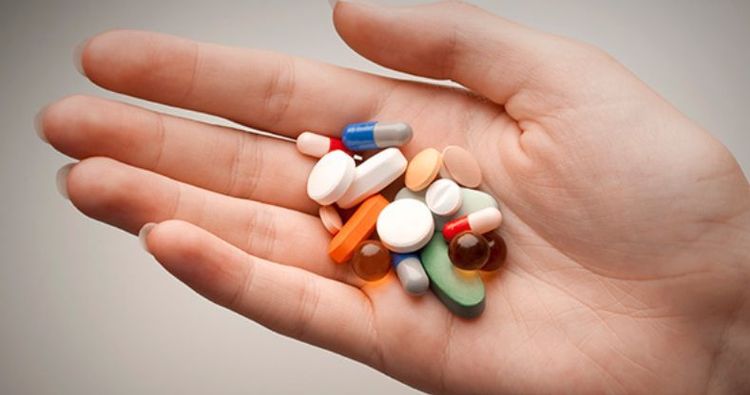
4. Causes from medical procedures
Stool discoloration can also occur after a major medical procedure, such as a bone marrow transplant. If your body rejects the transplant, a condition called graft-versus-host disease can develop, leading to severe gastrointestinal (GI) disturbances, which may result in diarrhea and green stool.
5. Parasites, viruses, and bacteria
Parasites, viruses, and bacteria can also cause green stool. Indeed, your body contains billions of bacteria that serve important functions. Bacteria like Salmonella (a common culprit in most foodborne illnesses), the Giardia parasite, and norovirus in water can cause your intestines to speed up faster than usual, leading to green stool.
6. Digestive conditions
If you have Crohn's disease or a gastric disorder, bile may move through your intestines too quickly, resulting in green stool. Crohn's disease is an inflammatory bowel disease that causes inflammation in the digestive tract.
Celiac disease, which is gluten intolerance, causes various digestive issues such as bloating, abdominal distension, diarrhea, and stomach pain. If you experience diarrhea or loose stools with celiac disease, you may also have green stool.
Other reasons that can cause green stool include: irritable bowel syndrome (IBS), ulcerative colitis, and laxative abuse.
7. Anal fistula
An anal fissure is a small tear in the tissue lining the anus, often resulting from passing hard stool. Therefore, if you have an anal fissure related to diarrhea, you may notice green stool. These tears can also cause fresh red blood in your stool.
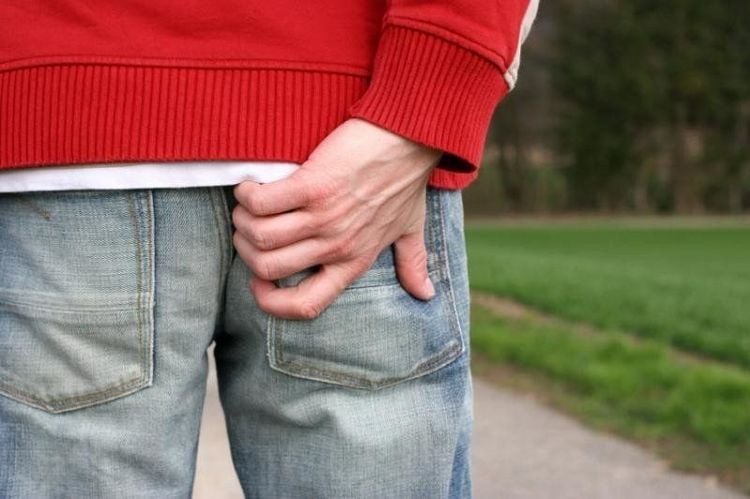
8. Is green stool a sign of cancer?
Don't panic or assume the worst if you notice green stool. While stool color changes can sometimes indicate the presence of a cancerous tumor, cancer typically causes stool to be black or tarry. This often suggests bleeding from somewhere in the upper gastrointestinal tract. Additionally, fresh red blood can sometimes occur with lower gastrointestinal cancers.
Although green stool is usually not a cause for concern or a sign of cancer, you should not ignore green stool accompanied by other symptoms. If you notice green stool without any other symptoms, the culprit may be leafy green vegetables or food coloring.
However, if you experience other symptoms, such as recurring diarrhea or vomiting that doesn't improve, this could indicate a medical condition like Crohn's disease or irritable bowel syndrome.
9. When to see a doctor for green stool?
If you have diarrhea for more than three days, it’s time to call your doctor and seek medical care. Untreated prolonged diarrhea can lead to dehydration and poor nutritional status.
If chronic green stool is accompanied by more severe symptoms, such as abdominal pain, blood in the stool, or nausea, these symptoms also need to be evaluated by a doctor.
While the nature of the examination may be a bit uncomfortable to discuss, your doctor can review your medication list, diet, and other medical conditions to determine the underlying cause of chronic green stool. If you have green stool just once, it's likely not something to be overly concerned about.
However, seeing other colors in your stool can indicate a problem. Bright red can signal bleeding in the lower intestines. Black or dark brown, like tar, can suggest bleeding in the upper gastrointestinal tract. But remember, it could also be from something you ate, like blueberries or black licorice.
If you're diagnosed with a medical disease, preventing green stool starts with addressing the underlying issue. For example, avoid gluten-containing foods if you have celiac disease. Also, limit foods that exacerbate irritable bowel syndrome and Crohn's disease symptoms, such as caffeine, dairy, fatty foods, and carbonated drinks. Keeping a food diary can help identify triggering factors.
The color of your stool can reflect your current health status. If green stool or blood in your stool appears frequently, it's best to visit a reputable medical facility for a check-up.
Currently, Vinmec International General Hospital is a trusted location for diagnosing gastrointestinal disorders, chronic diarrhea, and Crohn's disease. The hospital also offers screening techniques for stomach cancer and gastric polyps through gastroscopy with the Olympus CV 190 endoscope, featuring NBI (Narrow Band Imaging), which provides clearer mucosal analysis compared to standard endoscopy. This helps detect early-stage colorectal lesions, including inflammatory ulcers and digestive cancers, for optimal treatment planning.
ReferenceTo arrange an appointment, please call HOTLINE or make your reservation directly HERE. You may also download the MyVinmec app to schedule appointments faster and manage your reservations more conveniently.
Bowel movement. (n.d.) nlm.nih.gov/medlineplus/bowelmovement.html Carter, A. (2015, October 8). Why the black Whopper turns your poop green. USA Today. Retrieved from usatoday.com/story/news/nation-now/2015/10/08/why-black-whopper-turns-your-poop-green/73623596/ GVHD signs and symptoms bethematch.org/For-Patients-and- Families/Life-after-transplant/Graft-versus-host-disease/GVHD-signs-and-symptoms/ Giardias - general information. (2015, July 21) cdc.gov/parasites/giardia/general-info.html Mayo Clinic Staff. (2015, December 30). Anal fissures: Symptoms and causes mayoclinic.org/diseases-conditions/anal-fissure/symptoms-causes/dxc-20168232 Mayo Clinic Staff. (2015, September 19). Green stool: Definition mayoclinic.org/symptoms/green-stool/basics/definition/sym-20050708 Picco, M. F, (2016, October 6). Stool color: When to worry mayoclinic.org/stool-color/expert-answers/faq-20058080 Travelers' diarrhea. (2013, April 26) wwwnc.cdc.gov/travel/page/travelers-diarrhea
To arrange an appointment, please call HOTLINE or make your reservation directly HERE. You may also download the MyVinmec app to schedule appointments faster and manage your reservations more conveniently.
